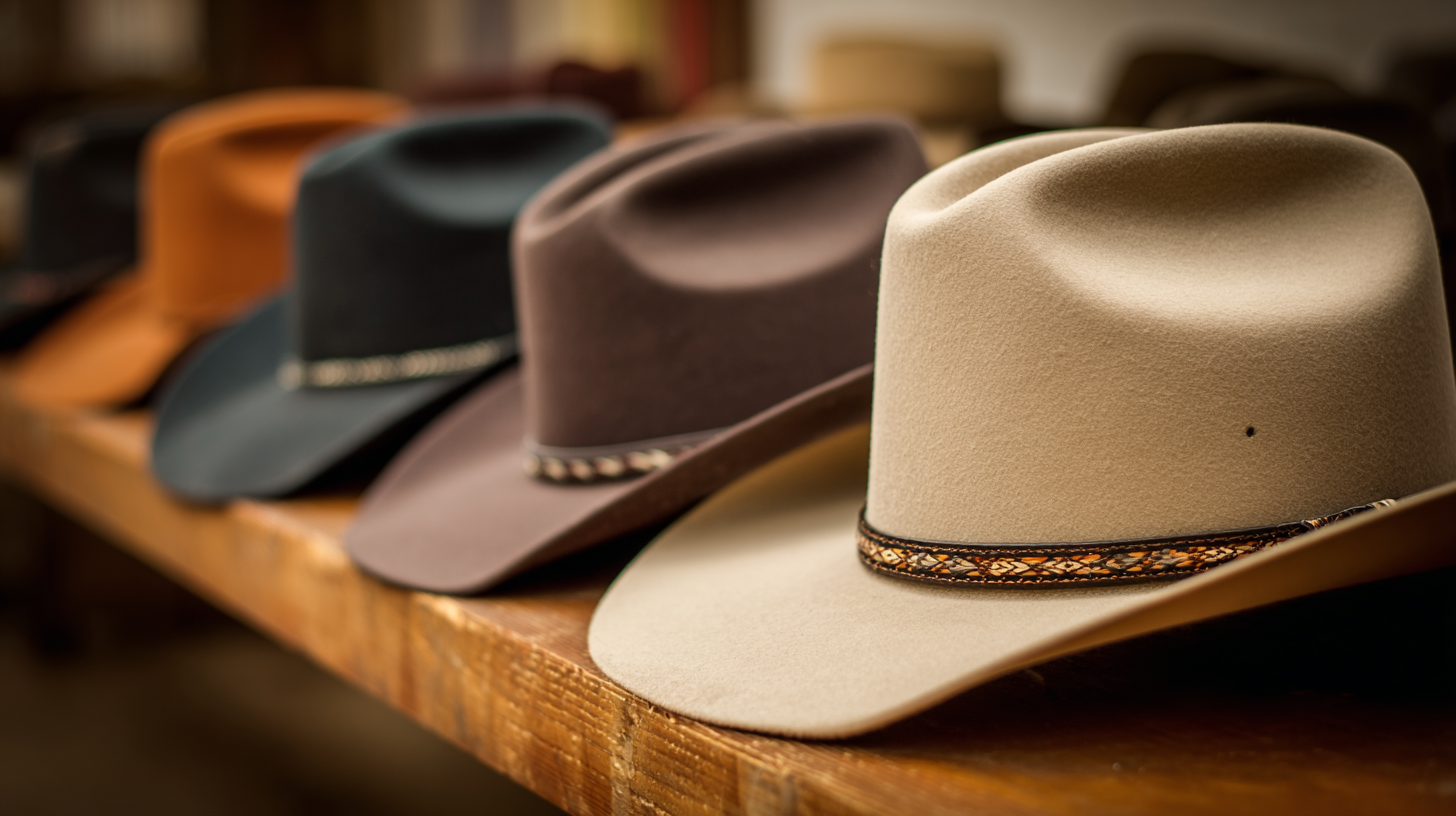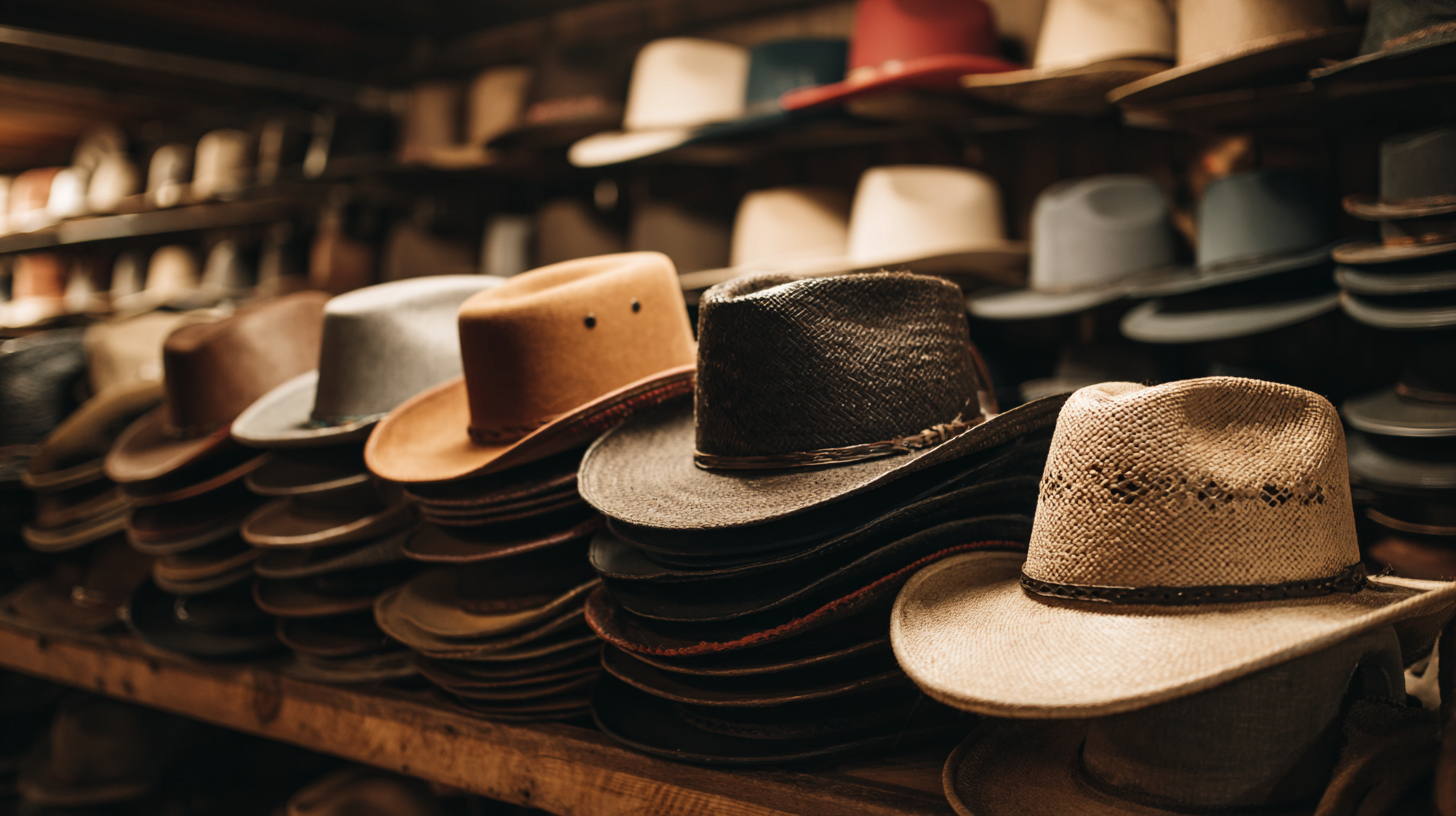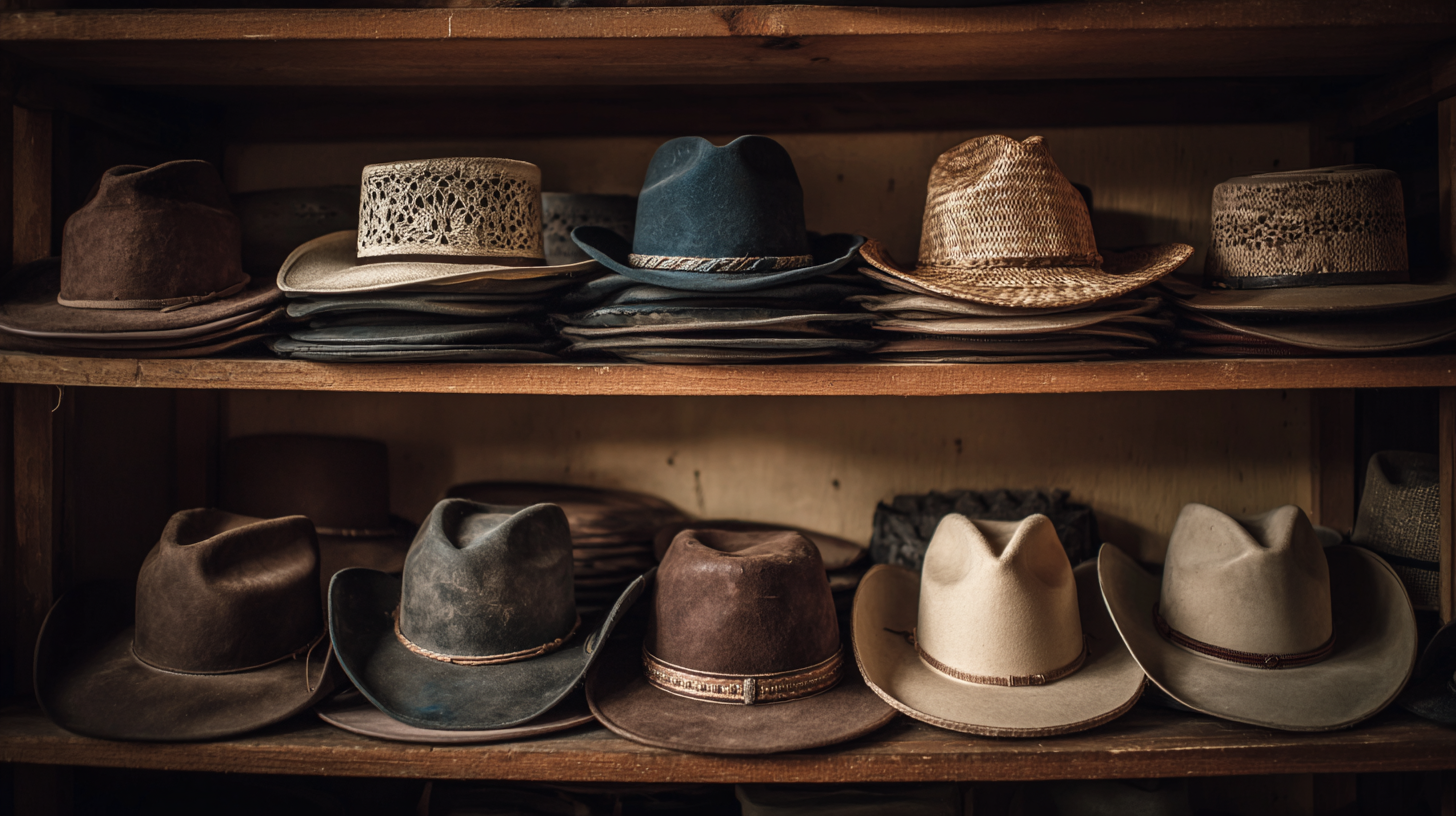The Ultimate Guide to Choosing the Best Real Cowboy Hats for Global Buyers
When it comes to capturing the quintessential spirit of the American West, few items embody that essence quite like Real Cowboy Hats. These iconic pieces not only serve as functional headgear for ranchers and cowboys facing the elements but also represent a rich cultural heritage that resonates across the globe. As global buyers seek to find the perfect hat, it’s essential to understand the various types, materials, and styles available in the market. From the classic wide-brimmed Stetson to unique handmade designs, each Real Cowboy Hat tells a story and reflects the wearer’s individuality.

This ultimate guide aims to equip buyers with the knowledge they need to make informed decisions, ensuring that they choose a hat that not only meets their practical needs but also becomes a treasured part of their identity. Whether you're a collector, a fashion enthusiast, or simply someone looking to embrace this timeless symbol of the West, join us as we explore the fascinating world of Real Cowboy Hats.
Understanding the Different Types of Cowboy Hats: A Comprehensive Overview
When it comes to choosing the right cowboy hat, understanding the various types is essential for global buyers. Cowboy hats can be categorized primarily into three types: Western, Gambler, and Cattleman. Each type has unique features tailored to specific functions and styles, appealing to different preferences around the world. According to a recent industry report by IBISWorld, the cowboy hat market in the United States alone is projected to reach $1.3 billion by 2025, highlighting the growing trend in Western apparel worldwide.
The materials used in cowboy hats play a vital role in their structure and comfort. For instance, felt hats, often crafted from beaver or rabbit fur, are ideal for colder climates, providing insulation and durability. In contrast, straw hats are lightweight and breathable, making them perfect for warmer environments. A survey conducted by the American Hat Manufacturers Association found that 65% of buyers prioritize material quality when selecting a cowboy hat, emphasizing the importance of choosing the right type based on regional climate and personal style.
Color and brim size also hold significance in the cowboy hat selection process. Classic colors like black, tan, and white remain popular, but vibrant hues are gaining traction among fashion-forward consumers. Brim size can influence both practicality and aesthetics; wider brims offer more sun protection, while narrower ones lend a more fashion-centric look. Understanding these differences allows buyers to make informed choices that align with their lifestyle and aesthetic preferences, ensuring they find the perfect cowboy hat to suit their needs.
Key Materials Used in Cowboy Hat Production and Their Impact on Quality
When it comes to choosing the best real cowboy hats, the key materials used in their production significantly impact their quality. The two most prevalent materials are felt and straw, each offering unique benefits. Felt hats, often made from high-quality beaver fur or blends, provide durability and insulation, making them ideal for colder climates. On the other hand, straw hats are lightweight and breathable, perfect for sunny weather, ensuring comfort during long hours outdoors.
**Tips:** When selecting a cowboy hat, consider the climate you'll be in. For hot summers, opt for a straw hat, whereas felt is better suited for cooler months. Additionally, pay attention to the craftsmanship; handmade hats often exhibit superior quality and attention to detail. Brands that emphasize artistry in their creations usually reflect this dedication through improved longevity and aesthetic appeal in their products.
Sounds intriguing, right? The evolving market is also seeing innovations where designers blend traditional techniques with modern styles. This merge not only enhances the visual identity of cowboy hats but also reflects the wearer's individuality, making them a staple accessory for both ranch hands and urban dwellers alike.
The Ultimate Guide to Choosing the Best Real Cowboy Hats for Global Buyers
| Material | Durability | Weather Resistance | Breathability | Weight |
|---|---|---|---|---|
| Straw | Moderate | Good | Excellent | Lightweight |
| Wool Felt | High | Limited | Moderate | Medium |
| Rabbit Fur Felt | Very High | Good | Moderate | Medium-Heavy |
| Beaver Fur Felt | Exceptional | Very Good | Good | Heavy |
How to Measure for the Perfect Fit: Sizing Guidelines for Cowboy Hats
When it comes to choosing the perfect cowboy hat, getting the right size is crucial for both comfort and style. To measure for the ideal fit, start by using a flexible measuring tape. Place the tape around the widest part of your head, just above your ears and eyebrows, ensuring that it sits comfortably without being too tight. It’s essential to measure in inches or centimeters, depending on the sizing chart you’re referencing. Take note of the measurement, and add about half an inch if you prefer a looser fit or plan to wear your hat for extended periods.

Once you have your measurement, consult the manufacturer's sizing chart, as sizes can vary between brands. Cowboy hats typically come in sizes ranging from small to extra-large, and some brands may also offer half sizes for a more precise fit. If you find yourself in between sizes, opt for the larger size for added comfort. Keeping the fit in mind, also consider the hat's design and style, as different shapes may affect how the hat sits on your head. By following these simple sizing guidelines, you’ll be well on your way to selecting the perfect cowboy hat that combines both fashion and functionality.
Examining the Regional Variations in Cowboy Hat Styles Across the Globe
When it comes to cowboy hats, styles can vary significantly across different regions of the world. A recent study from the
Fashion Institute of Technology indicates that regional preferences are often influenced by local culture and climate.
For instance, the traditional Western felt hats, which are popular in the United States, often feature wider brims designed to provide protection from the sun, making them ideal for the arid conditions of the American West.
Conversely, in places like Argentina, where the gaucho culture prevails, the sombrero-style hats reflect a distinct aesthetic, combining both functionality and fashion.
Furthermore, a survey conducted by the International Hat Federation found that in Australia, the iconic
Akubra hats are crafted from rabbit fur felt, which not only illustrates the country's unique materials but also serves to protect against the harsh outback sun.
Such regional differences point to a broader trend in hat design, where the choice of materials and style is a reflection of both functionality and cultural identity.
Understanding these variations can greatly assist global buyers in selecting the perfect cowboy hat that resonates with their personal style and regional traditions.

Top Brands Dominating the Cowboy Hat Market: Insights and Recommendations
When it comes to selecting the perfect cowboy hat, understanding the top brands in the market is crucial for buyers worldwide. Recent industry reports indicate that the cowboy hat segment has experienced a surge in popularity, with a projected growth rate of 4.5% annually from 2023 to 2028. Major brands like Stetson, Resistol, and Justin have consistently dominated this market, more than holding their ground against emerging competitors. These brands not only offer a rich heritage associated with authenticity but also innovate their designs to cater to modern consumers' preferences.
Stetson, in particular, stands out with approximately 30% market share, thanks to its commitment to quality and timeless style. According to a report by IBISWorld, the brand’s hat sales reached an impressive $70 million last year. Similarly, Resistol has captured a loyal customer base by focusing on craftsmanship and variety, appealing to both traditionalists and contemporary fashion forward customers. As global demand for cowboy hats increases, these brands are keen to adapt, implementing sustainable practices and expanding their reach through online platforms, making cowboy hats accessible to a broader audience.
The Ultimate Guide to Choosing the Best Real Cowboy Hats
This chart represents the popularity distribution of different cowboy hat styles among global buyers. Style A leads with 35% of the popularity, followed by Style B at 25%, illustrating current trends in the cowboy hat market.
